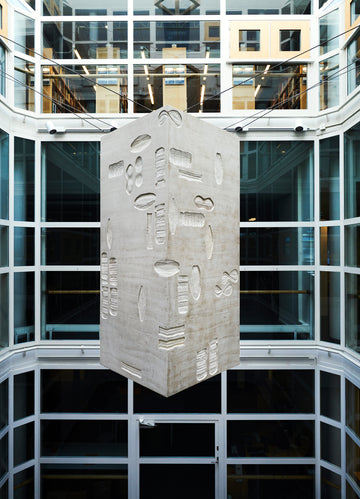MUNTHE ART MONDAY: Hilda Hellström
Website: www.hildahellstrom.se
Instagram: @hilda_hellstrom
Please introduce yourself and tell us about what you do.
I’m a Swedish artist, educated at the Royal College of Art in London, and based in Copenhagen for the last six years. My work focuses on material-narratives where I use both traditional and non-traditional craft techniques to convey natural- and cultural-histories alongside personal experiences. I combine large scale public commissions with gallery exhibitions. Each work, project or exhibition is based on a clear narrative where I interweave fabulation and fabrication, shape and image making. My work draws upon geology, archeology, alchemy and pantheism, with a perpetual presence of time and transformation.
Could you explain more about how being a woman has affected your career?
It’s hard to decipher exactly what aspects of one's person or career are an effect of one’s gender. But, to generalise, I think there’s a self-reflective complexity and depth to the practices of female artists (and as a consequence also a large portion of self-doubt). Because of this, some of our most interesting and renowned artists today are women. There are different ideas on what a successful career is too. My male colleagues tend to talk in more expansive terms and have qualities that are straightforward and accessible, which have a positive effect on their career.
Can you name some other female (artist) that inspires you and explain why they do so?
Most of my inspiration or information comes from writings rather than visual art. Like the Finnish poet Edith Södergran. Especially her later, more transcendental or anthroposophic work like the poem ‘The land that is not’. In life, she oscillated between this Nietzschean pride and extreme self-doubt. In general, I’m quite interested in the ideas and sentiments within art and society around the last turn of the century up until the interwar period.
Since this series of interviews focuses on gender inequality within the arts, I also want to mention Siri Hustvedt, especially her compilation of essays on art called ‘A woman looking at men, looking at women’. There’s an interview with her on Louisiana Chanel where she explains that the reason why there are mostly women who buy her books is because men are uncomfortable with having a female voice inside their head. Women on the other hand, don’t have the same difficulty reading literature written by men. Since the ‘grand narrative’ within history and society is male, women are taught how to be able to see the world through a male perspective.
What would you like people to notice in your artwork?
To look for the several layers in my practice. Each work is driven by a certain subject matter or narrative that I like to explore. At the same time, I have a strong formalistic approach in my practice, where I put emphasis on material and craft-techniques. In a fast-paced world the latter can sometimes overthrow the former even though they both inform my practice equally.
Each Monday we bring you a new interview with a female artist.
Follow along at MUNTHE ART MONDAY.







